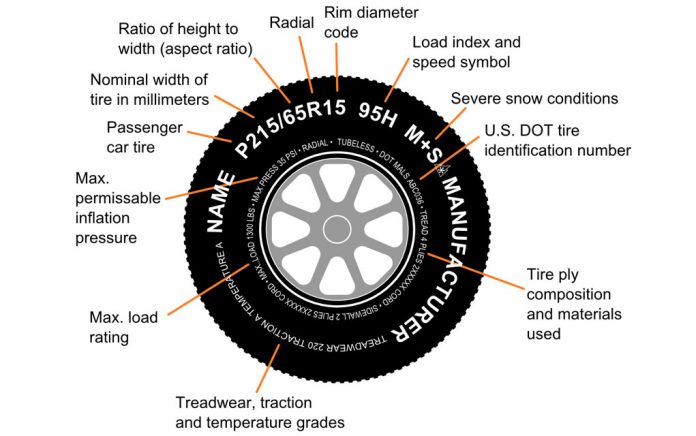For some reason have become the go-to person for my wife’s friends’ strange questions. Actually, most of the blog articles on this site are direct results from their questions. Here’s the question of the day: What do those numbers mean on the side of my car’s tires?
There are a couple of numbers on tires so I’ll go through each one respectively. The first set of numbers look like this: xxx/xxx/xxx. This set of numbers are the ISO metric code for the tire. These numbers tell you the size, type, and performance of the tire.
The letter P at the beginning of the set of numbers tells you that the tire is a P-Metric tire and created for passenger type vehicles. If it starts with an LT, then those are for light trucks. Ok, now for the numbers.
The first set of numbers is the width of the tires in millimeters. If the first set of numbers is P230, then that means the width of the tires is 230 millimeters.
The next set of numbers is the aspect ratio. The aspect ratio is the ratio of the height of the tire’s cross section to its width. So if the next set of numbers is 70, then that means that the height is equal to 70% of the tire’s width. The larger the number, the higher the walls.
Next to the aspect ratio is generally the letter R which means it is a radial tire where the layers run radially across the tire.
Finally, the next set of numbers after the R would be the diameter of the tire measured in inches. Yes, we went from millimeters and now to inches.
What’s PSI? What should it be? And where do I find it? PSI is pounds per square inch and tell you how much air you need to put into the tire for best performance. For the best results, refer to the inside panel of your car door. The range will be anywhere from 30-40 PSI.
My tire has a green cap. What should I do? If your tire has a green cap, this usually means it was filled with Nitrogen instead of regular air. My mechanic tells me that filling tires with Nitrogen will help them last longer. They also don’t expand/contract due to head or cold which means less stress on the tire.
Always refer to your owner’s manual for tire settings.
References: https://upload.wikimedia.org/wikipedia/commons/b/be/Tire_code_-_en.svg



